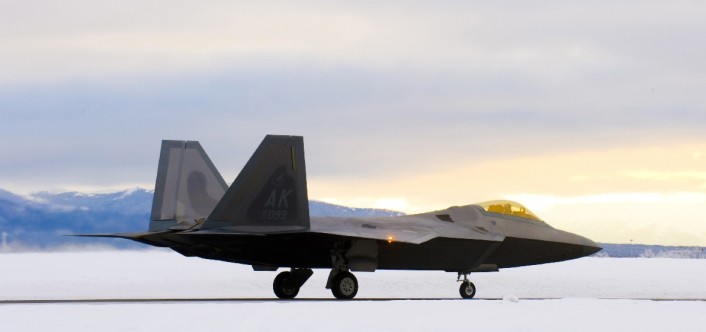90th Fighter Squadron is the first F-22 Raptor combat unit equipped with the AIM-9X dogfight missile.
On Mar. 1, 2016 the 90th Fighter Squadron (FS) belonging to the 3rd Wing stationed at Joint Base Elmendorf-Richardson, Alaska officially became the first combat-operational Raptor unit to equip an F-22 with the AIM-9X Sidewinder.
According to Chief Master Sgt. Chuck Jenkins, 3rd Wing Weapons Manager, the AIM-9X will increase the already outstanding Raptor’s combat capabilities. “This has been in the inventory for the Air Force and Navy for some years; it’s nothing new to the military, but to put it on the Ferrari of aircraft – the F-22, the most advanced aircraft we have – it gives the pilots more maneuverability, larger range, and it’s a much faster missile” he said.
A claim confirmed by Lt. Col David Skalicky, commander of the 90th FS, who highlighted that, like the F-22 is a generation beyond the fighters that came before it, the AIM-9X is a generation beyond the previous variants of the Sidewinder missile: “Every aspect about this missile, it’s a huge capability increase in all facets, we can employ it in more scenarios, at greater range, and reach edges of the envelope we would have had a more difficult time reaching with the AIM-9M.”
The late arrival of the AIM-9X (already integrated in most of US combat planes since 2003) to the F-22 very well may signal a new era in Air Force airpower, since as told by Skalicky “this missile makes the most lethal combat aircraft the world has ever seen even more capable. It’s a giant enhancement to the already formidable F-22 arsenal.”
Noteworthy, the AIM-9X will not be coupled to a Helmet Mounted Display (HMD) as the F-22 is not equipped with such kind of helmet that provides the essential flight and weapon aiming information through line of sight imagery (the project to implement it was axed following 2013 budget cuts).
With a HMD (like the American Joint Helmet Mounted Cueing System – JHMCS), information imagery (including aircraft’s airspeed, altitude, weapons status, aiming etc) are projected on the visor enabling the pilot to look out in any direction with all the required data always in his field of vision.
The HMD would enable the pilot to exploit the full HOBS (High Off-Boresight) capabilities of the AIM-9X and engage a target by simply looking at it.
However, the F-22 will probably fill the gap and benefit of the AIM-9X Block II, that is expected to feature a Lock-on After Launch capability with a datalink, for Helmetless High Off-Boresight (HHOBS): the air-to-air missile will be launched first and then directed to its target afterwards even though it is behind the launching aircraft.
Initial testing highlighted a problem though: whilst HHOBS in Block II worked pretty well, its performance was below the performance seen in Block I.
Image credit: Senior Airman Laura Turner and Senior Airman Garrett Hothan / U.S. Air Force

















